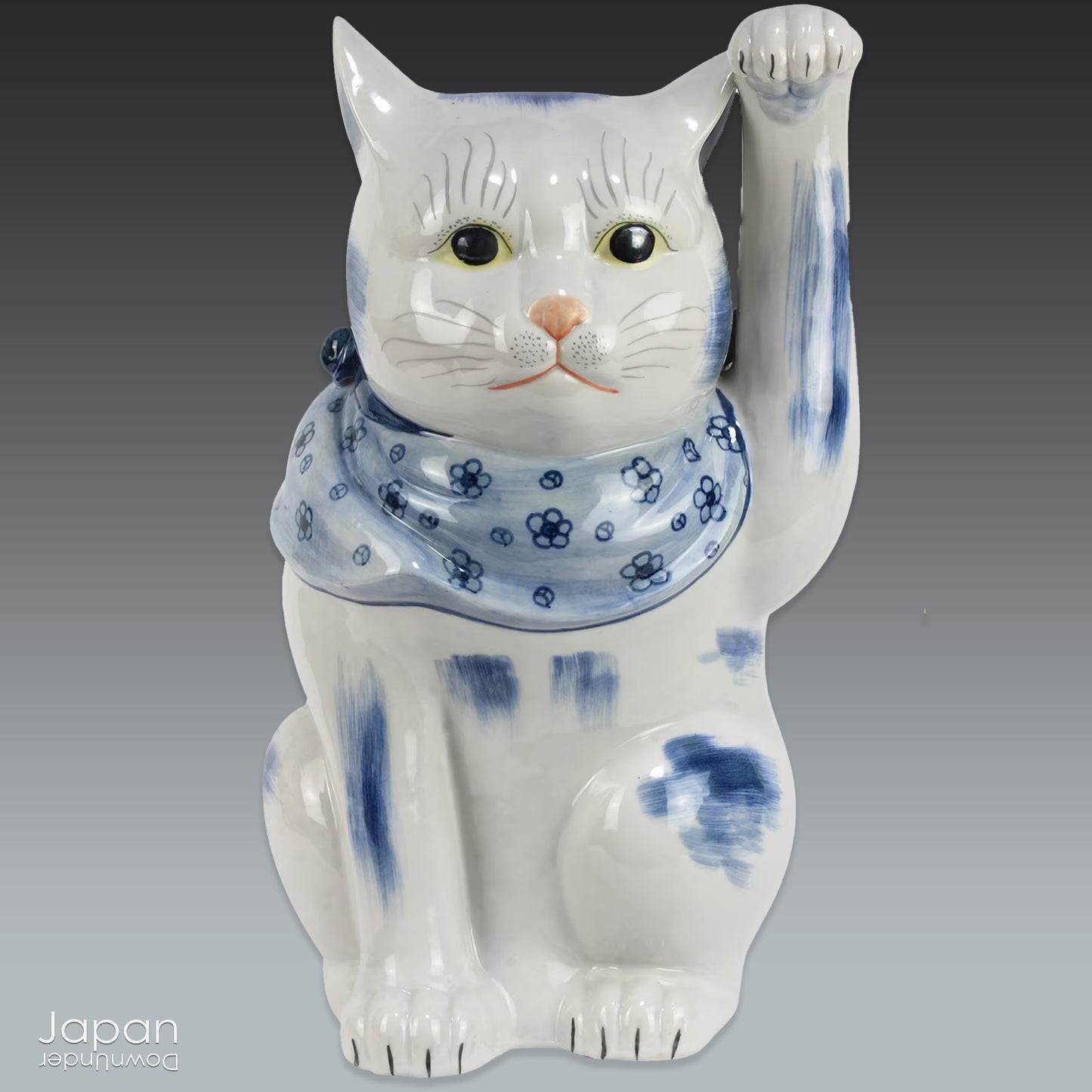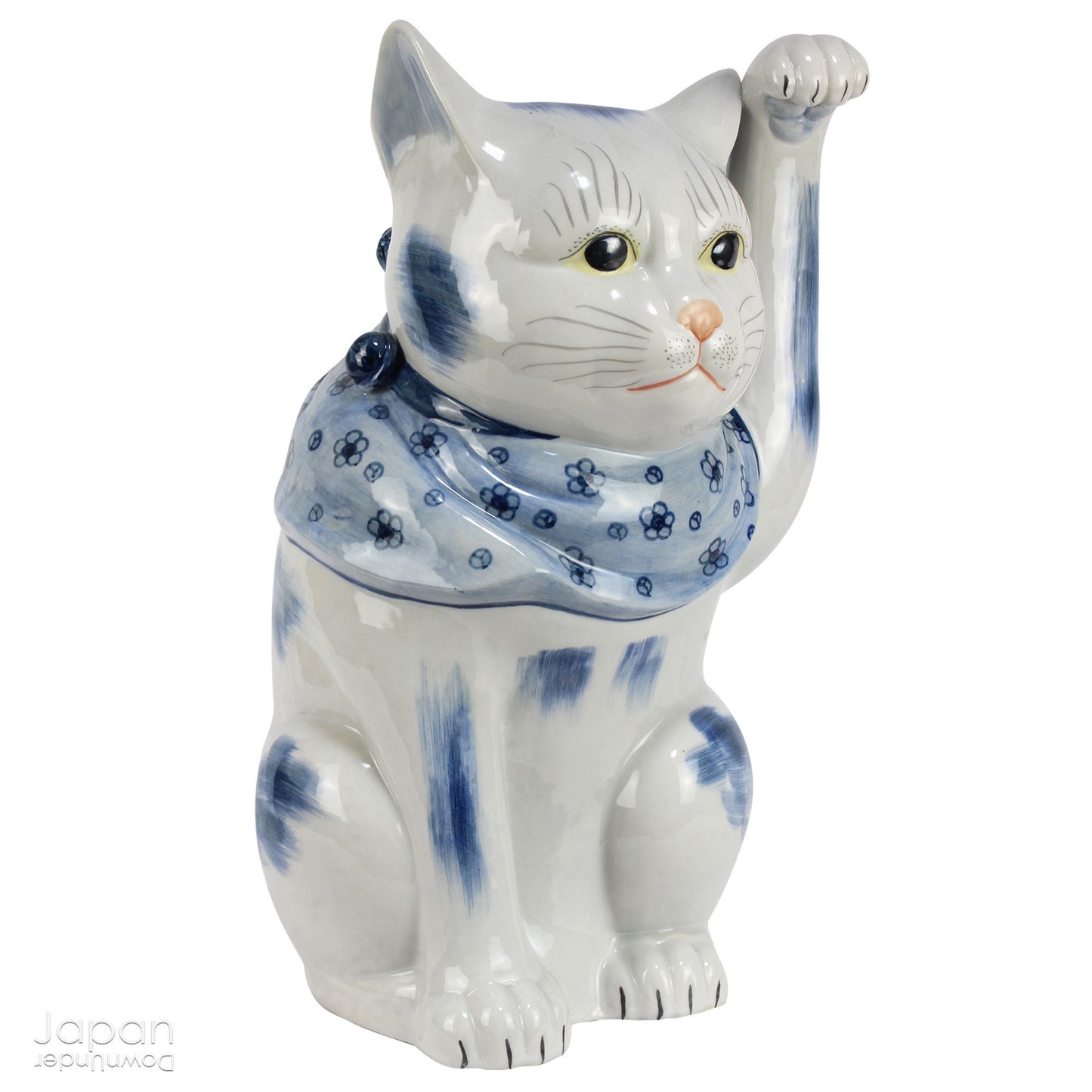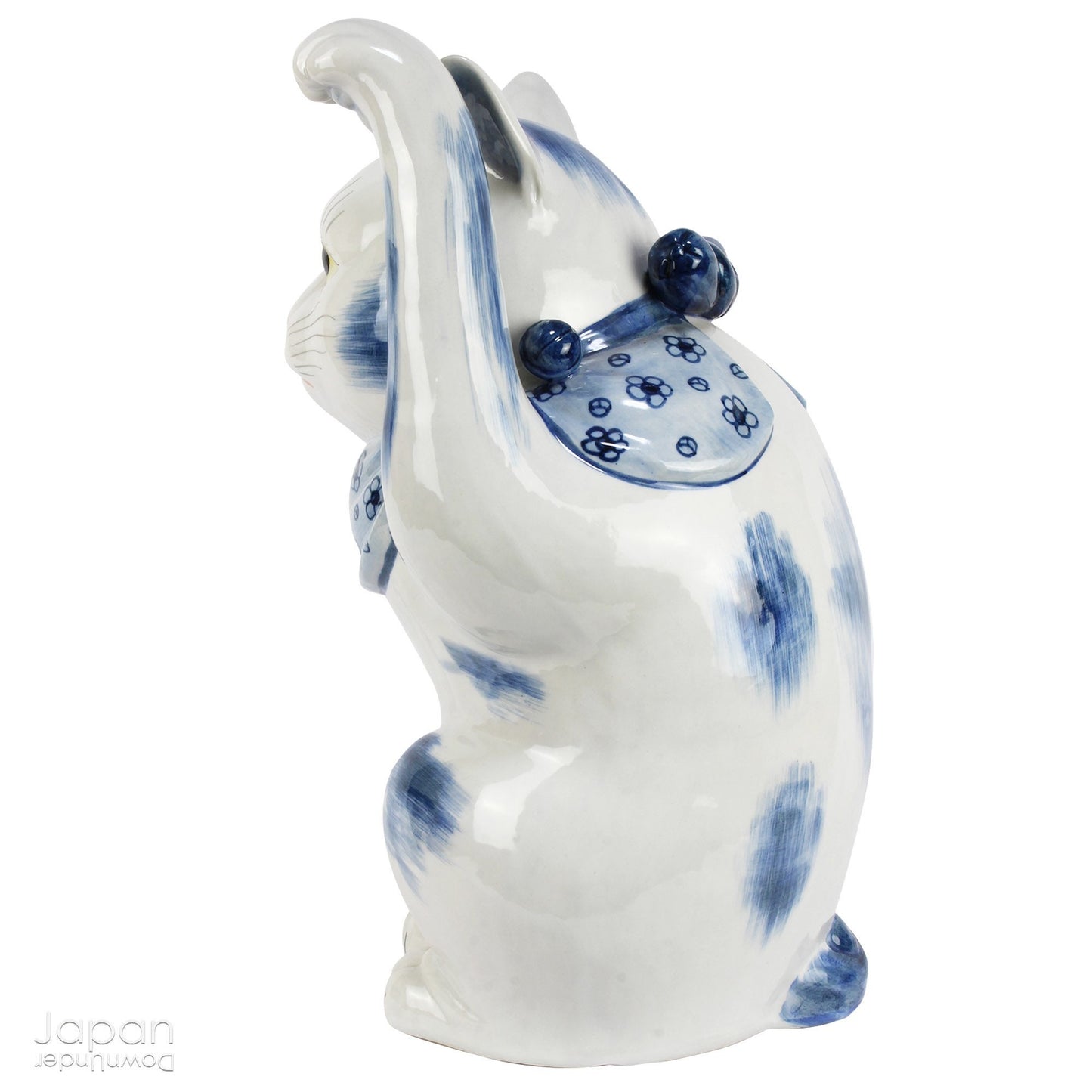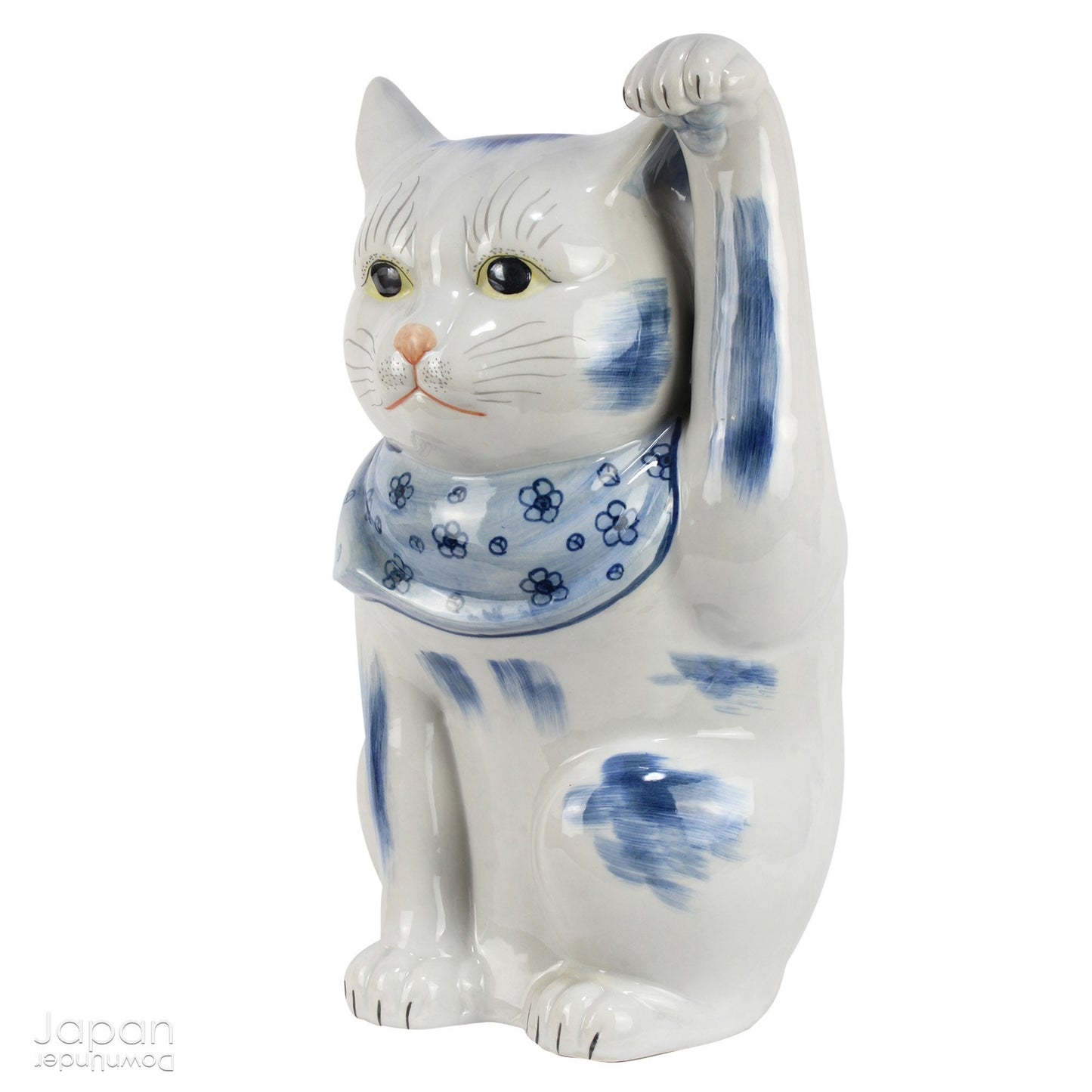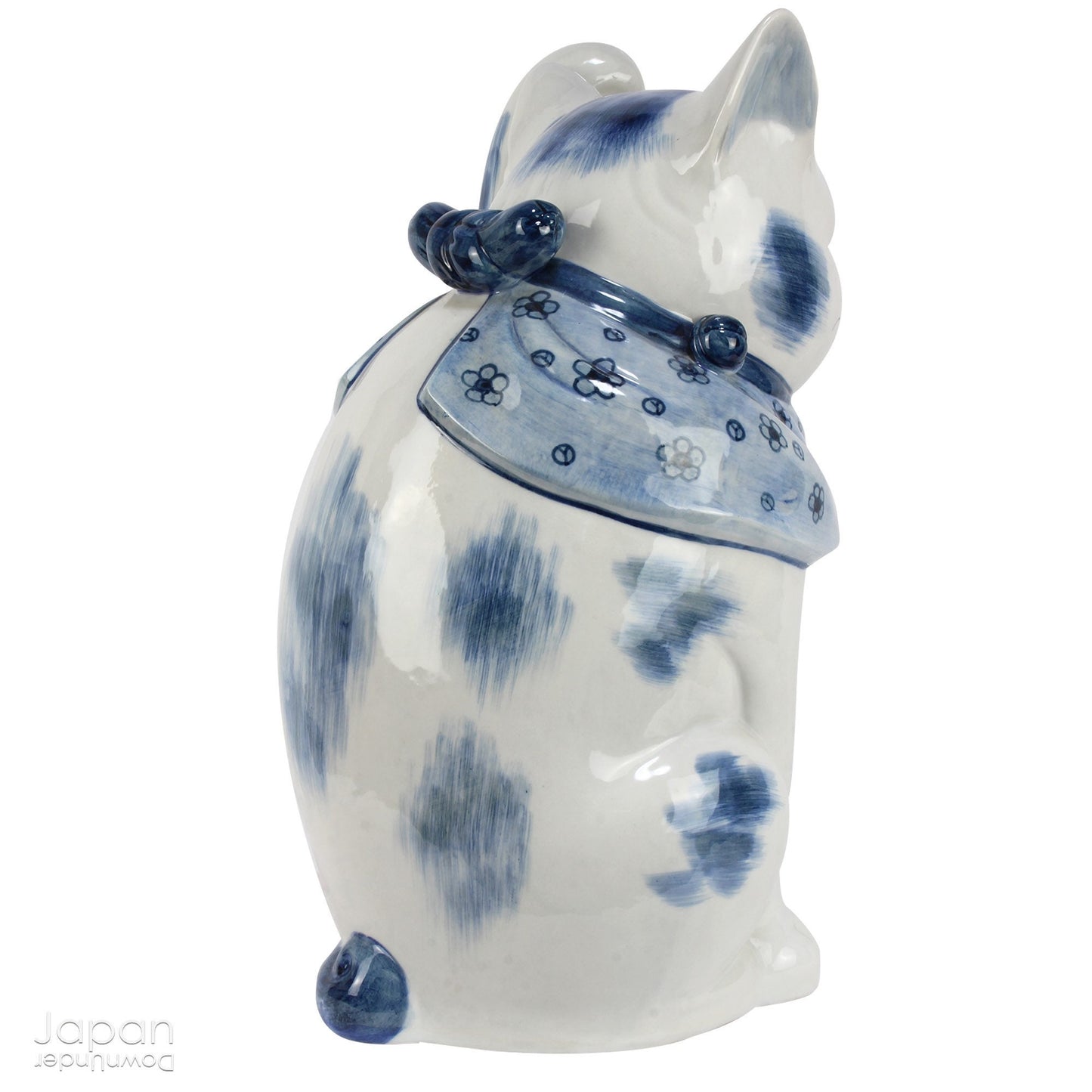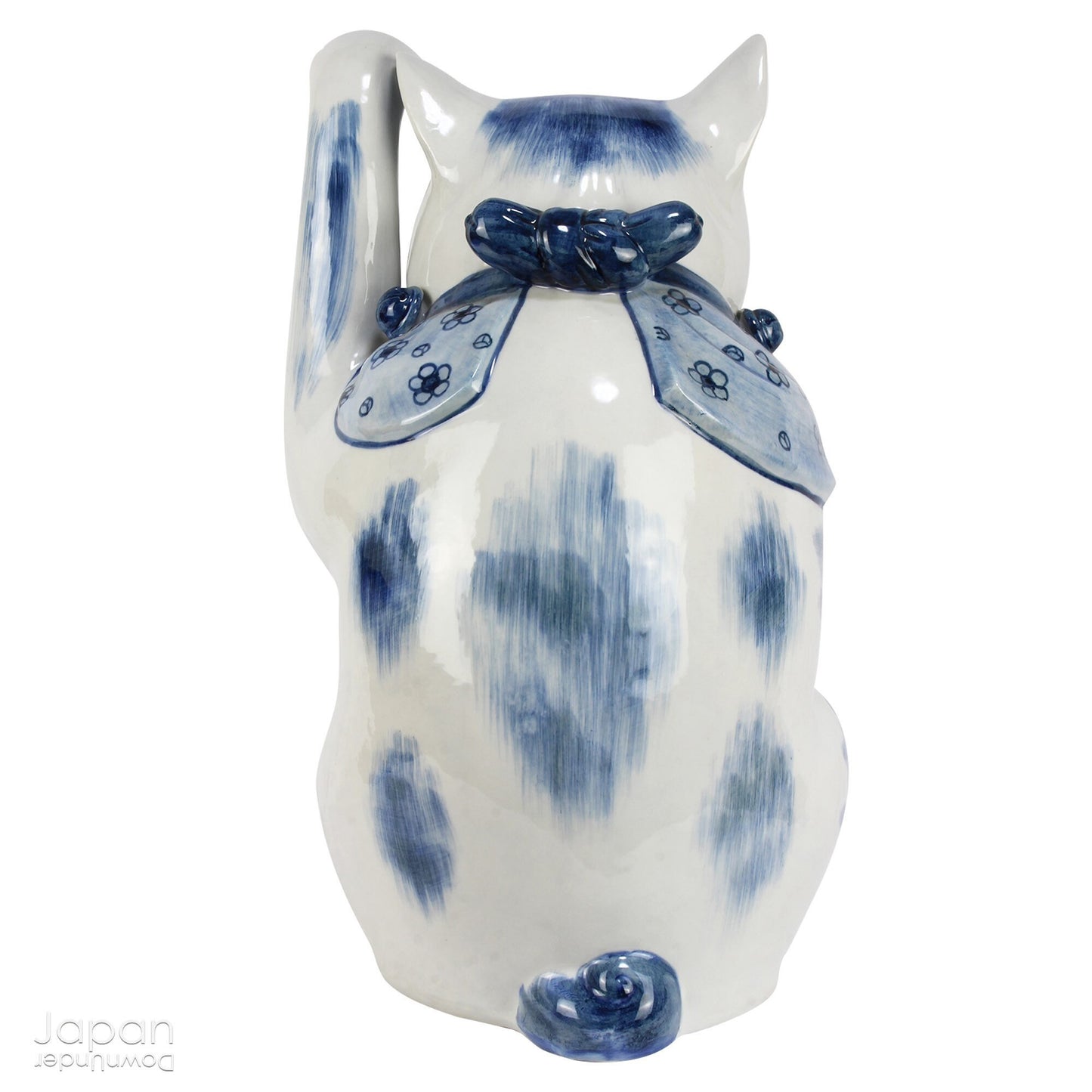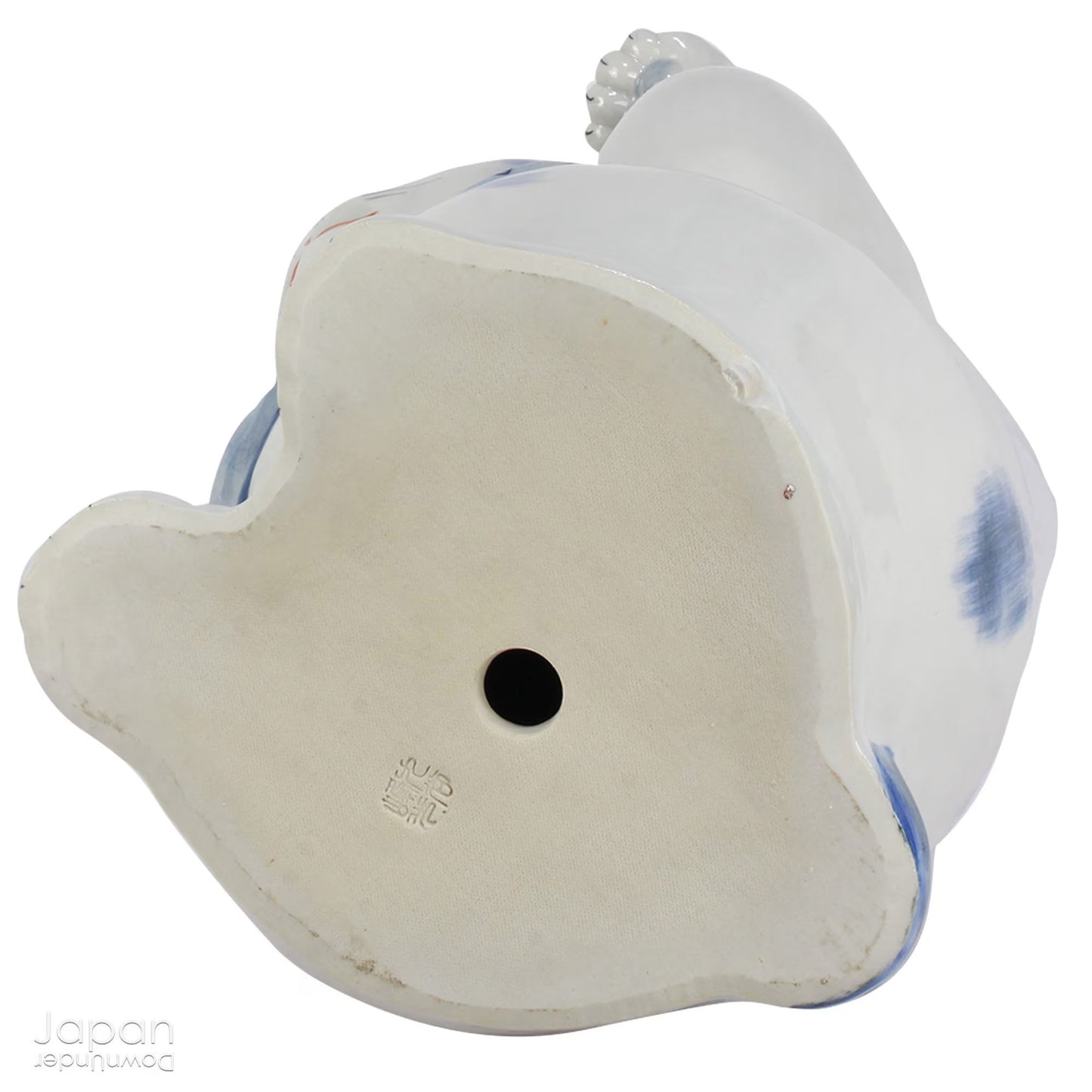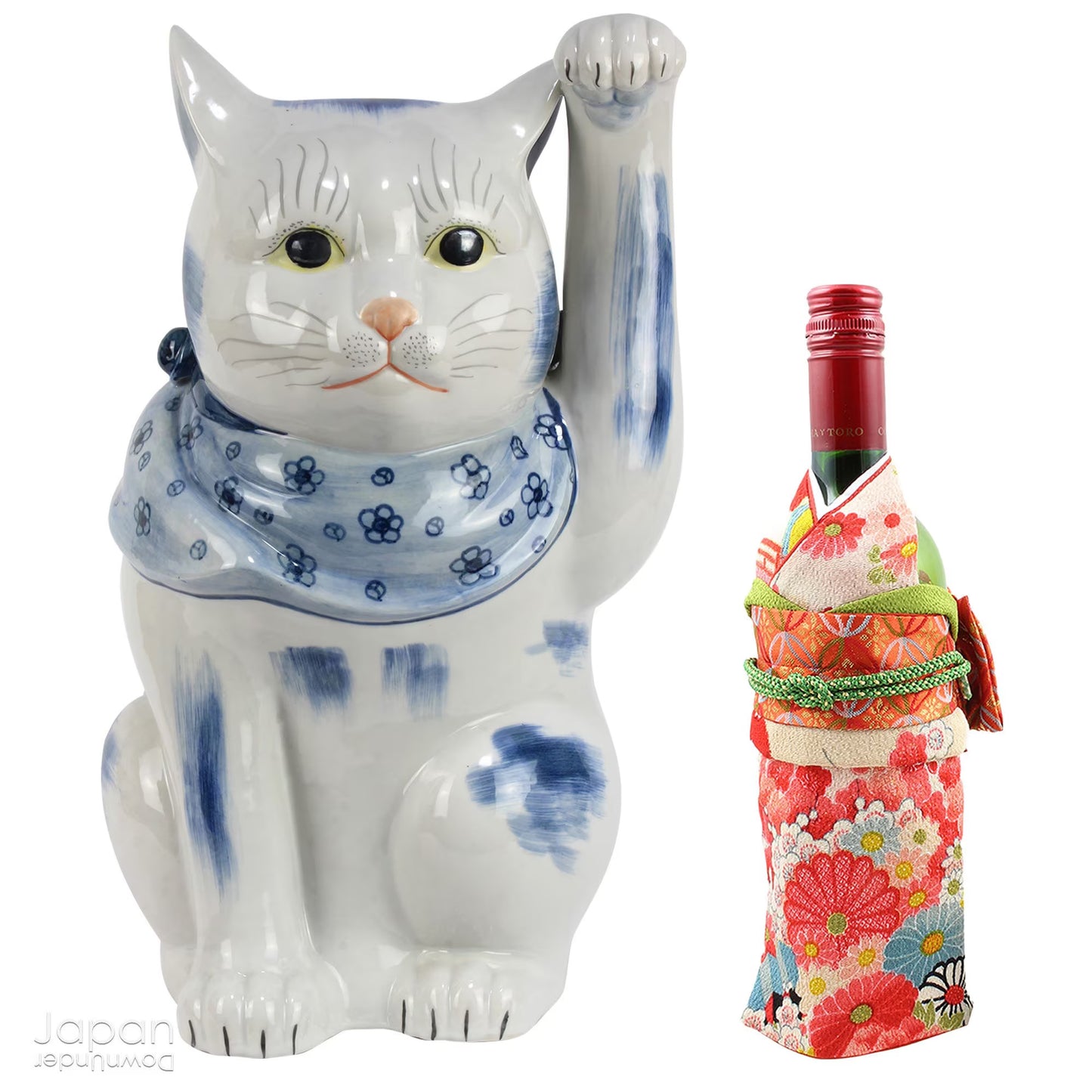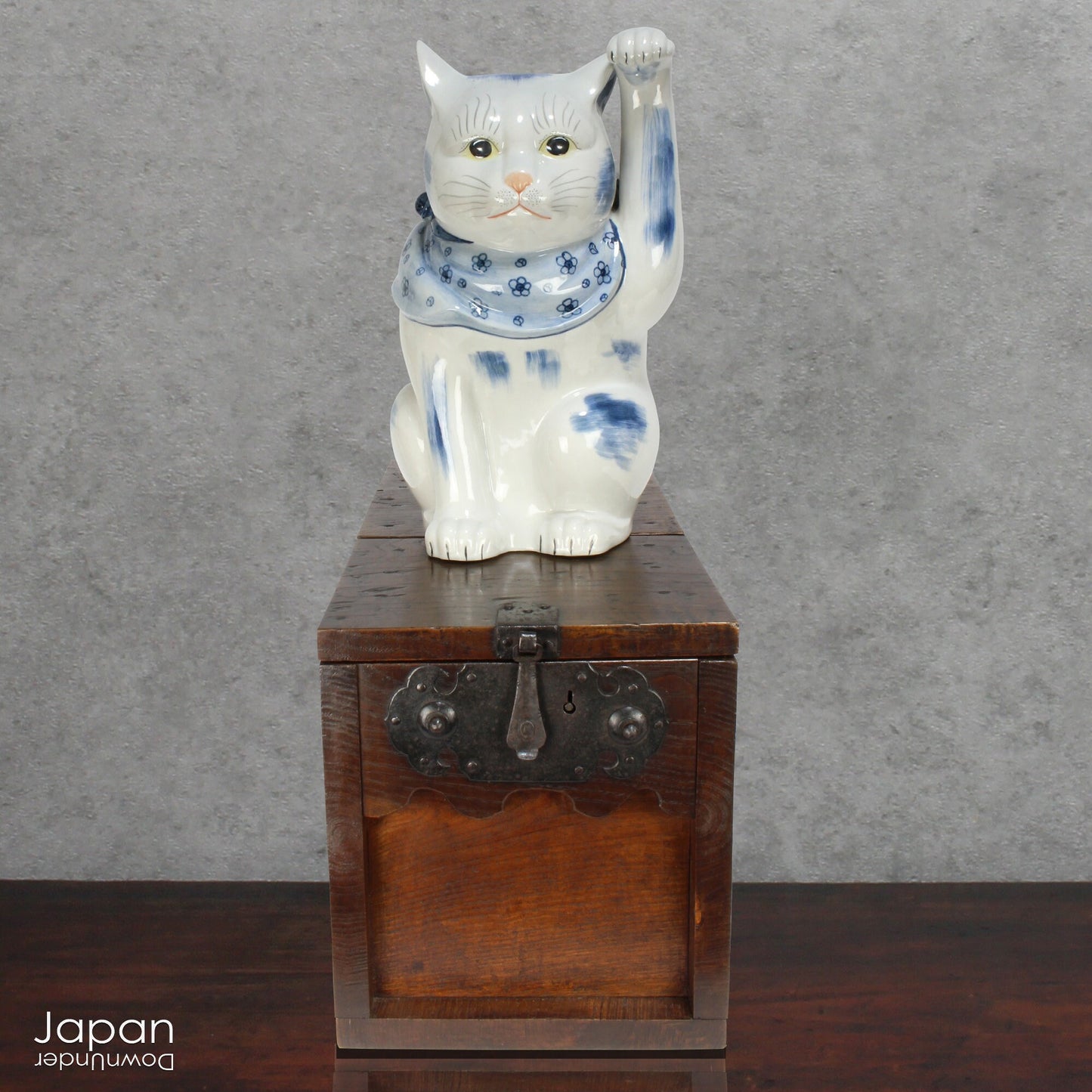My Store
large japanese vintage ceramic kutani maneki neko - blue and white decor
large japanese vintage ceramic kutani maneki neko - blue and white decor
Couldn't load pickup availability
Love Japanese Style Like We Do
Invite prosperity, charm, and an air of refined tradition into your space with this stunning, large vintage Kutani pottery maneki neko. Crafted in the revered sometsuke style, this striking cat brings together the timeless beauty of cobalt blue and white with rich cultural symbolism - beckoning good luck, wealth, and positive energy wherever it's placed.
Standing an impressive 38 cm (15") tall, this heavy and solidly made cat features a crisp white glaze adorned with graceful splashes of indigo blue. Around its neck, it wears a delicately rendered pale blue bib, tied at the back with a sculpted three-dimensional bow and detailed with dainty plum blossoms - an auspicious symbol in Japanese culture representing protection, prosperity, and new opportunities. Twin bells hang from its collar, traditionally believed to ward off misfortune and invite good spirits.
Its left paw is raised high, inviting in customers, relationships, and fruitful connections. In folklore, a long, upright paw is said to beckon greater fortune than a short one. With wide-open eyes and alert ears, this elegant feline is poised to draw in blessings from afar. Sweet touches like long eyelashes and fine whiskers give it a delightful personality.
Made in the historic Kutani Hachimangama kiln of Ishikawa Prefecture, the piece bears the kiln’s impressed seal on its underside - a mark of quality and heritage. With the labor-intensive process of creating blue-and-white sometsuke cats now largely discontinued, such pieces are becoming increasingly rare and collectible.
Substantial in weight and steeped in meaning, this Kutani lucky cat is more than just decor - it’s a beautiful symbol of fortune and resilience, perfect for welcoming abundance into your home, office, or shop. And as the saying goes in Japan: the bigger the maneki neko, the bigger the luck!
- measures around 38 cm (15”) tall x 23 cm (9”) across x 20 cm (7.8”) deep.
- weighs 6,000 gm (13.2 lbs)
(listing for blue and white cat only)
SHIPPING INFORMATION
- please read our shipping notes in shipping policy.
- we use recycle packaging wherever possible and wrap for safety, rather than appearance!
ABOUT OUR VINTAGE, ANTIQUE AND OTHER ITEMS
We list pieces we feel are worthy of display. There may be scratches, dents, fading and signs of wear and tear. We try to explain the condition of each item exactly, but may miss something.
Information regarding the item and it’s age is obtained from dealers and our personal research. We do our best to give you the correct information but please be aware that we cannot guarantee this information.
Please message us prior to purchase with any questions you may have about our products.
KUTANI WARE / KUTANIYAKI
Kutani ware is a type of pottery manufactured in the city of Kaga in Ishikawa prefecture. It is a traditional handicraft that was first produced during the early Edo period (early 17th century).
Kutani ware's notable features are vivid colors, bold and elegant designs, and a particular technique of overglaze painting. This technique consists of using pigments to paint a pattern over a glaze and then firing the piece again. Because the paint used for the overglaze can be fired at about 800℃ (about 1472℉), there is a wide variety of colors that can be used.
Kutani ware are all very colorful but the colors used differ depending on the type of pottery. Kokutani and Mokubei use five colors, (red, yellow, green, purple, and Prussian blue). Kokutani has lovely patterns of birds and flowers, landscapes, and geometric motifs. Mokubei features small Chinese scholarly men figures amongst pine trees. Yoshidaya is beautiful with four vivid shades of blue, yellow, purple, and Prussian blue and patterns include plants, flowers and birds. The red used in Iidaya is striking and distinctive with detailed figures like dragons and lion dogs drawn in fine red lines with gold ornaments. Mori is an ornate textured pattern used with gold on ornate figures like the maneki neko beckoning cat. Sometsuke is a ceramic painted in only cobalt blue and white.
PLUM BLOSSOMS
In Japan the plum tree (ume) is the first to bud and blossom in the late winter, even when it’s limbs may remain snow-laden: the plum gives us hope, showing us that spring and new opportunities for beauty and joy are just around the corner. Unfazed by the cold, the blossoms are associated with good health, strong endurance, and the ability to overcome the adversity of winter.
While hanami (flower-viewing festivals) are now associated with cherry blossoms, it was plum blossoms that first started this Japanese tradition. Plum blossom season became an event and the upper class would plan parties and events to behold the awakening trees.
In Japanese tradition the plum tree is celebrated as a protective charm against evil, so the trees are traditionally planted in the northeast of the garden, the direction from which evil is believed to come.
As spring welcomes the farming season, plum blossoms also symbolize prosperity. Bountiful crop harvests and good fortune are likewise associated.
The plum in full bloom can be appreciated for only a short time. As such the plum tree is a reminder that life is short; we should live it to the full taking the chances given in each moment.
MANEKI NEKO
Maneki neko, or the beckoning cat, is a good luck charm that dates back to the Edo era. It was traditionally used by businesses to beckon in customers and money. A raised left paw beckons in customers and a raised right paw beckons in money and good fortune. These days, not just businesses, but almost every Japanese household has a maneki neko for good luck. Sometimes both of the paws are raised! There are so many different kinds of maneki neko and they really make a wonderful collection item.
Share
